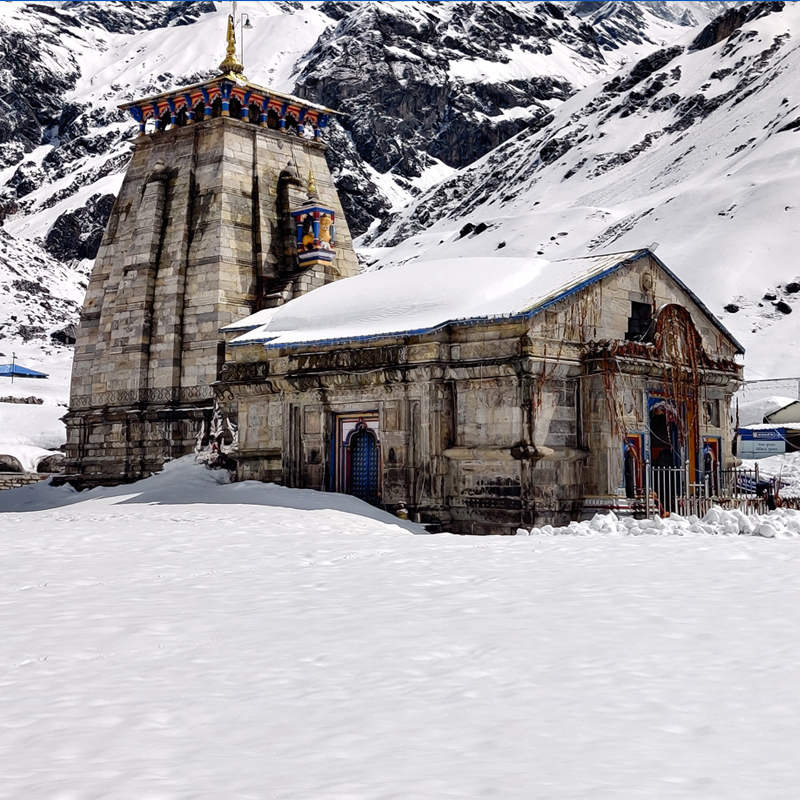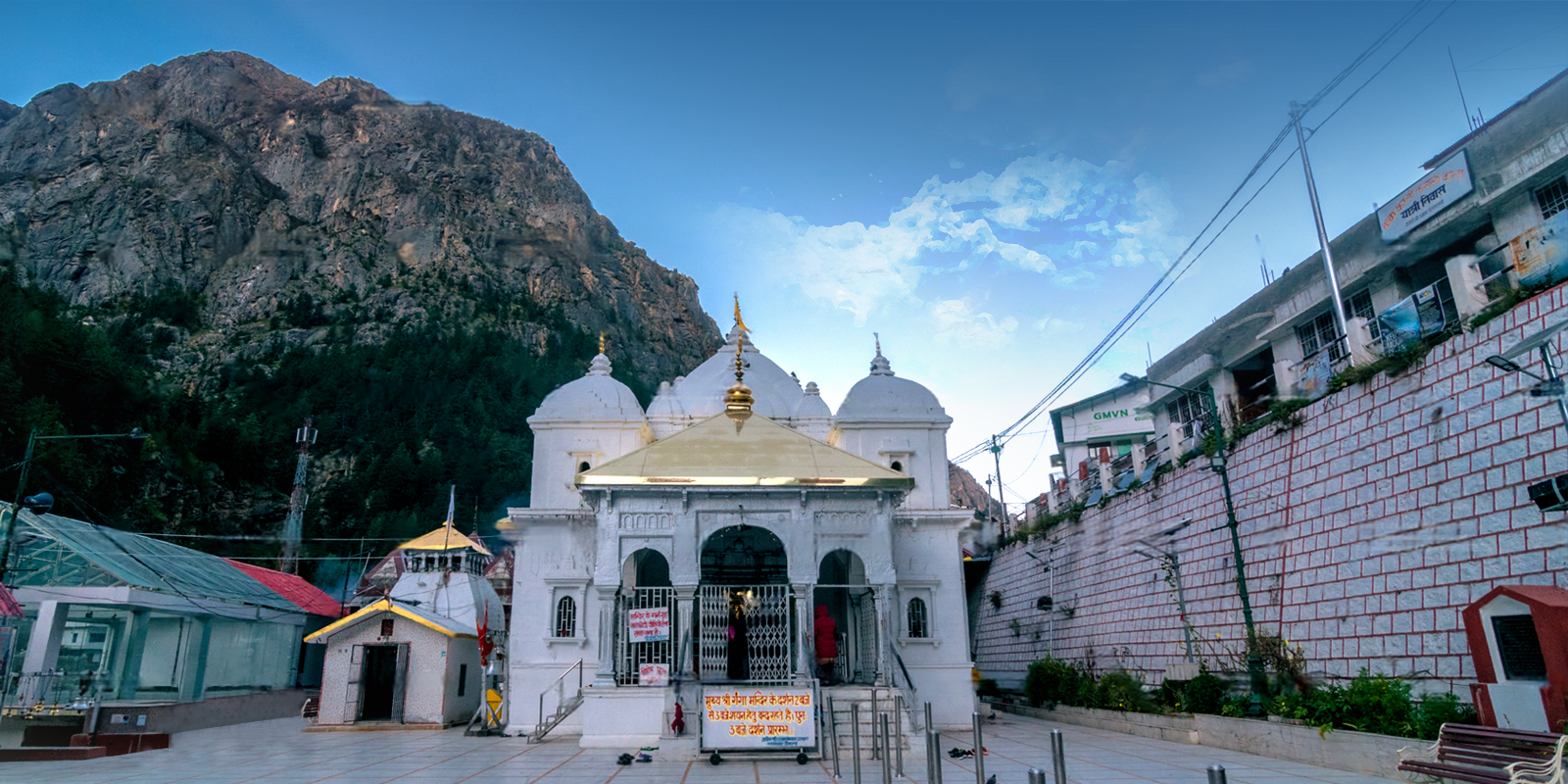Kedārnāth Temple, one of the revered Char Dhāmas in India, is dedicated to Lord Śiva. Perched at an altitude of 3,583 meters, it is not only a symbol of man’s eternal quest for the divine but also a testament to the resilience of human spirit, rebuilt after devastating floods. The temple’s architecture and the surrounding natural beauty offer a profound spiritual experience to all pilgrims.
Noteworthy Attractions
Multilevel Sanctums
Each tier houses unique deities and shrines, reflecting Shiva’s multifaceted nature and showcasing India’s vast pantheon under a single towering roof.
Panoramic River Views
The highest floors provide sweeping perspectives of the holy Ganges and the surrounding hills, perfect for contemplation and quiet photo moments.
Vibrant Spiritual Ambiance
Continuous bells, incense-laden corridors, and the murmur of pilgrims infuse each hallway with reverence and palpable devotional energy.
History & Culture

Origins & Legacy
Kedārnāth, one of Hinduism’s most revered sites, traces its origins to the ancient legends of the Pāṇḍavas from the Mahābhārata. Seeking penance for their sins in the epic war, they established this temple where Lord Śiva manifested as a Jyotirliṅga. Reconstructed by the philosopher-saint Ādi Śaṅkarācārya in the 8th century, Kedārnāth has stood as a symbol of unwavering faith and spiritual resilience, surviving centuries of natural adversities.

Sacred Importance
As the abode of one of the twelve Jyotirliṅgas, Kedārnāth holds a paramount place in Hindu spirituality. Devotees believe that prayers offered here lead directly to mokṣa—liberation from the cycle of birth and rebirth. The temple’s remote Himalayan location emphasizes the isolation needed for deep meditation and connection with the divine, making it a sought-after destination during the auspicious yātrā season, where thousands undertake the challenging pilgrimage to seek Lord Śiva’s blessings and experience spiritual renewal.

Rituals & Traditions
-
Morning Pooja: Devotees participate in the early morning rituals to worship Lord Shiva.
-
Pilgrim’s Trek: The arduous trek to the temple is considered a spiritual cleanse.
-
Shiva’s Abhishekam: Devotees perform sacred ablutions on the Jyotirlinga with the holy waters of the Mandakini river.
Practical Guidance
When to Go
The temple is open from April to November, avoiding the harsh winter. The best time to visit is May-June and September-October, avoiding the monsoon season for safety reasons.
Respect & Reverence
Guidelines
- Dress warmly in respectful attire, prepare physically for the high altitude.
Restrictions
- Photography inside the sanctum is prohibited; alcohol and non-vegetarian food are not permitted on the trek.
Arriving Here
The Himalayas span a vast region across northern India, and different areas are best accessed through different gateways. Whether you’re heading to Rishikesh, Dharamshala, or deeper into Uttarkashi or Ladakh, here’s a simple guide to help you plan your journey.
Rishikesh & Uttarkashi (Uttarakhand)
By Air
Fly from Delhi to Dehradun Airport (DED) (~45 min), then drive 30–40 minutes to Rishikesh
By Road
- Drive from Delhi: 6–7 hours
- 🚌 Buses and shared taxis available from Delhi ISBTFrom Rishikesh,
Uttarkashi is another 5–6 hour mountain drive
For a deeper dive into why Rishikesh is considered the Yoga Capital of the World, explore our exclusive page on Yoga in Rishikesh.
Dharamshala & McLeod Ganj (Himachal Pradesh)
By Air : Fly from Delhi to Kangra Airport (DHM) — 13 km from Dharamshala
By Road :
- Drive from Chandigarh: 6–7 hours
- Overnight Volvo buses from Delhi also available
You can also explore our dedicated page on Yoga in Dharamshala to discover retreat listings and local travel insights.
Ladakh (Leh region)
By Air : Direct flights from Delhi to Leh Airport (IXL) (~1.5 hours)
By Road : Road access limited from Nov–May due to heavy snowfall
Immersive Experiences
Spiritual Practices
Participate in the Rudrābhiṣeka Pūja, a powerful ritual where the Śiva Liṅga is bathed in sacred waters accompanied by the chanting of Śrī Rudram, a Vedic hymn. This ritual is considered highly auspicious, believed to cleanse the spiritual impurities of participants and bestow profound peace and blessings.
Local Rituals
Immerse yourself in the divine energy of Kedārnāth Temple amidst the Atmosphere of Pure Serenity. Despite the crowds, a mystical silence pervades, allowing devotees to meditate and connect deeply with their inner selves. Experience the Mesmerizing Morning & Evening Ārti—witness the temple come alive with the glow of oil lamps and the rhythmic chants of mantras, creating an atmosphere of divine magic.
Char Dham Yatra
Closing Reflection
Kedārnāth Temple offers more than just a pilgrimage; it’s a journey into self-discovery amidst the grandeur of nature and the divine aura of Lord Śiva.

